Source: BBC
A surge of desperate migrants from the Middle East and Africa has put unprecedented pressure on EU countries, especially Italy, Greece and Hungary.
More than 350,000 migrants were detected at the EU's borders in January-August 2015, compared with 280,000 detections for the whole of 2014.
That 350,000 figure - an estimate from the International Organization for Migration (IOM) - does not include the many who got in undetected.
The conflicts raging in Syria and Afghanistan, and abuses in Eritrea, are major drivers of the migration.
More than 2,600 migrants have drowned in the Mediterranean this year, trying to reach Greece or Italy, the IOM says.
Many attempt the perilous Western Balkans route, hoping to reach Germany and other northern EU countries. They run the gauntlet of brutal people traffickers and robbers.
How many people are on the move?
The 350,000 total detected so far this year at the EU's borders includes more than 230,000 who arrived in Greece and nearly 115,000 in Italy. About 2,100 arrived in Spain.
Most of those heading for Greece take the relatively short voyage from Turkey to the islands of Kos, Chios, Lesvos and Samos - often in flimsy rubber dinghies or small wooden boats.
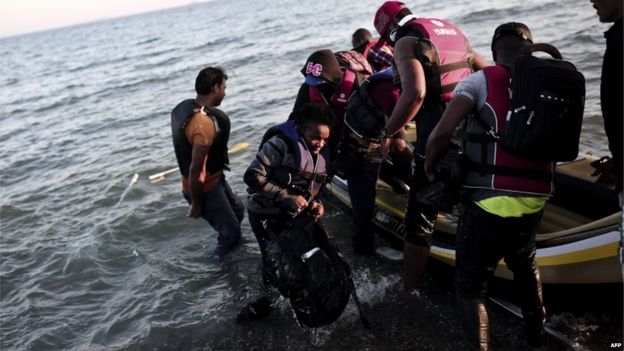
The voyage from Libya to Italy is longer and more hazardous.
Some of the worse tragedies in 2015 include:
- Two boats carrying about 500 migrants sinking after leaving Zuwara in Libyaon 27 August
- Bodies of 71 people, believed to be Syrian migrants, discovered in an abandoned lorry in Austria on 27 August
- Shipwreck off Italy's Lampedusa island on 19 April took an estimated 800 lives
- At least 300 migrants feared to have drowned after attempting to cross the Mediterranean in rough seas in early February
Survivors often report violence and abuse by people traffickers. Many migrants pay thousands of dollars each to the traffickers.
Chaos in Libya has given traffickers freedom to exploit migrants.
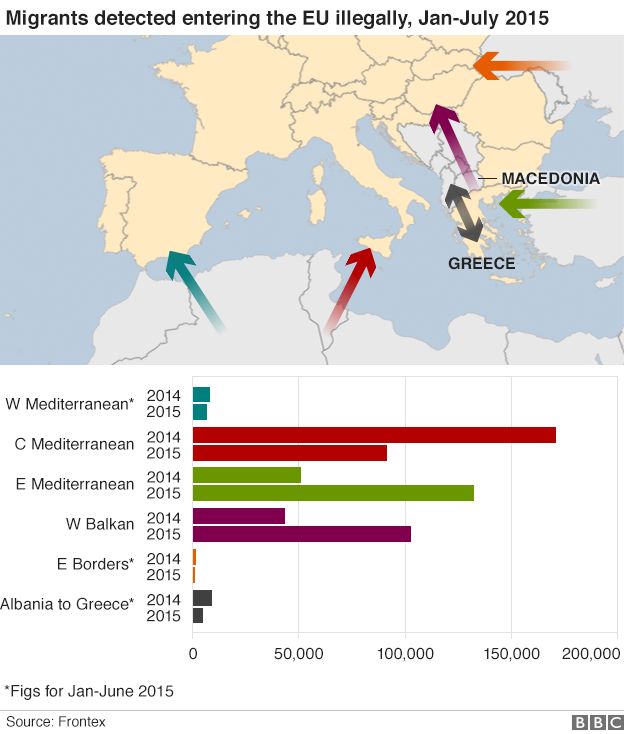

The EU's external border force, Frontex, monitors the different routes migrants use and how many people are arriving at Europe's borders.
Frontex has been carrying out most of the rescue operations in the Mediterranean.
Where do they come from?
The largest migrant group by nationality in 2015 is Syrians, as people flee the country's brutal civil war.
Afghans and Eritreans come next. They are often also fleeing poverty and human rights abuses.
People from Nigeria and Kosovo also make up large groups. Poor, marginalised Roma account for many of the migrants from Kosovo.

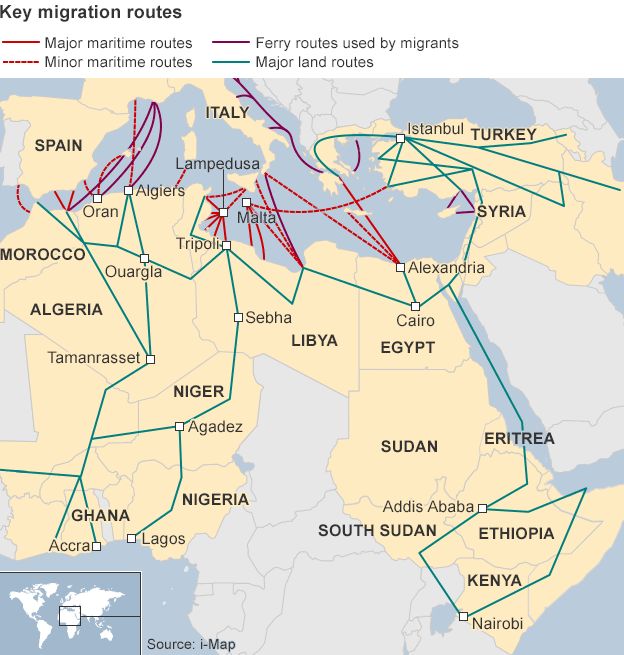
In Italy new migrants from Eritrea form the biggest group, followed by those from Nigeria.
But in Greece migrants from Syria are the biggest group, then Afghans.
Where are they going next?
Germany, which receives by far the most asylum applications in the EU, isexpecting 800,000 refugees to arrive this year.
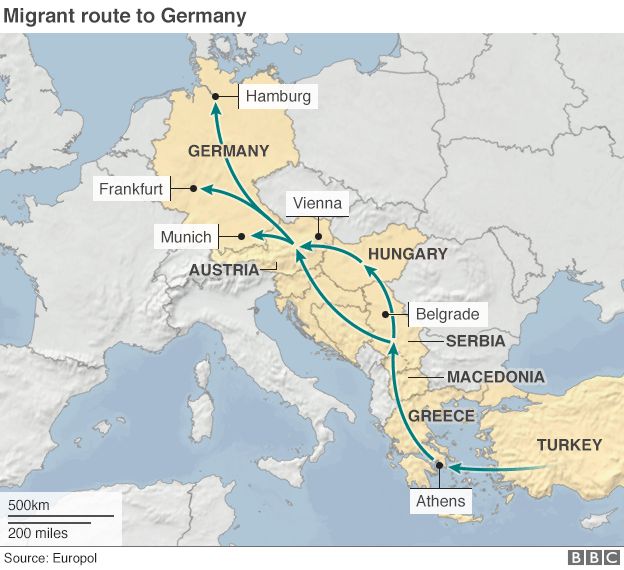
Some 3,000 people are expected to cross into Macedonia each day in the coming months, according to the UN.
Many then cross into Serbia, which says it has seen 90,000 migrants so far this year, and head for Hungary - a gateway to the EU's passport-free Schengen zone.
In July alone, 34,000 migrants were detected trying to cross from Serbia into Hungary.
Faced with that influx, Hungary has built a controversial 175km (110-mile) razor-wire fence to keep migrants out. It plans to fortify it over the coming weeks.
It has also urged EU partners not to send back migrants who have travelled on from Hungary.
After hundreds of migrants crowded onto trains bound for Austria and Germany at a central Budapest station the Hungarian authorities decided to close it to migrants on 1 September.
The EU's Dublin Regulation places responsibility for examining an asylum seeker's claim with the first EU country that the migrant reached.
But Greece complained that it was inundated with applications, as so many migrants arrived in Greece first. Germany then suspended the Dublin rule and decided to consider asylum cases from the majority of Syrian applicants.
Finland is also among the countries that have stopped sending people back to Greece.
Other countries are also struggling with the influx of arrivals.
Austria says it is expecting 80,000 asylum applications this year.
Meanwhile several thousand migrants are camped around Calais in northern France. Many have been risking their lives jumping aboard UK-bound lorries and trains near the Channel Tunnel.
What are politicians doing about it?
After much argument EU leaders agreed to triple the funding of Frontex to some €120m (£86m) in April.
However Frontex said in August it had not received enough pledges of assets from EU states to help Greece and Hungary.
Italy abandoned its Mare Nostrum search-and-rescue mission last year after some EU members - including the UK - said they could not afford to fund it. The decision was widely criticised by rights groups.
In April EU leaders pledged to beef up maritime patrols in the Mediterranean, disrupt people trafficking networks and capture and destroy boats before migrants board them. Any military action would have to conform to international law.
And huge questions remain over how the migrants who arrive in the EU are dealt with.
The European Commission tried unsuccessfully to persuade member states to accept a mandatory quota system for taking in 40,000 Syrians and Eritreans over the next two years. They agreed to accept 32,500 on a voluntary basis.
Another 20,000 refugees currently in UNHCR camps would also be transferred to the EU, but the details have not been decided.
Are EU countries doing their fair share?
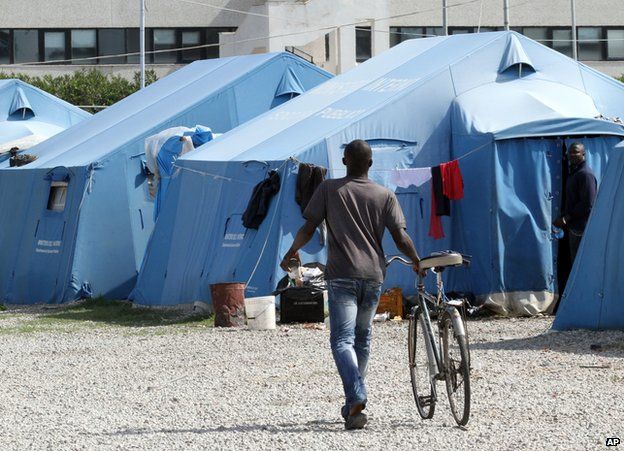
For years the EU has been struggling to harmonise asylum policy. That is difficult with 28 member states, each with their own police force and judiciary.
Championing the rights of poor migrants is difficult as the economic climate is still gloomy, many Europeans are unemployed and wary of foreign workers, and EU countries are divided over how to share the refugee burden.
More detailed joint rules have been brought in with the Common European Asylum System - but rules are one thing, putting them into practice EU-wide is another challenge.
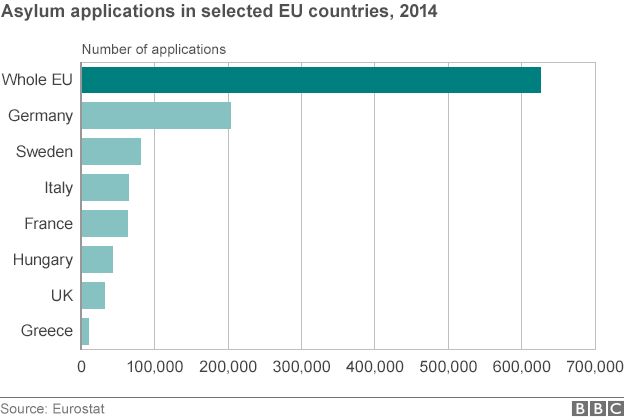
The number of asylum claims in the EU rose to 626,065 in 2014, up from 435,190 in 2013, the European Commission reports.
Germany granted the most, followed by Sweden and Italy.
How do migrants get asylum status in the EU?
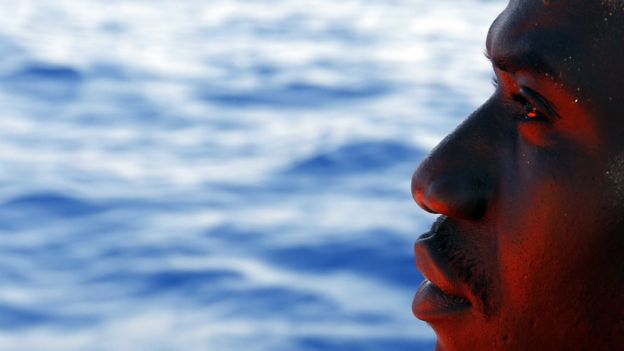 AP
AP
They have to satisfy the authorities that they are fleeing persecution and would face harm or even death if sent back to their country of origin.
Under EU rules, an asylum seeker has the right to food, first aid and shelter in a reception centre. They should get an individual assessment of their needs. They may be granted asylum by the authorities at "first instance". If unsuccessful, they can appeal against the decision in court, and may win.
Asylum seekers are supposed to be granted the right to work within nine months of arrival.
In 2014, the EU statistics agency Eurostat reports, 45% of first instance asylum decisions were positive - that is, authorities granted refugee or subsidiary protection status, or permission to stay for humanitarian reasons.
Nearly 104,000 got refugee status in the EU last year, nearly 60,000 subsidiary protection status and just over 20,000 authorisation to stay for humanitarian reasons. (Austria was not included in the data.)
The highest number of positive asylum decisions in 2014 was in Germany (48,000), followed by Sweden (33,000), then France and Italy (both 21,000) and the UK (14,000).
 Twitter
Twitter




0 comments:
Post a Comment